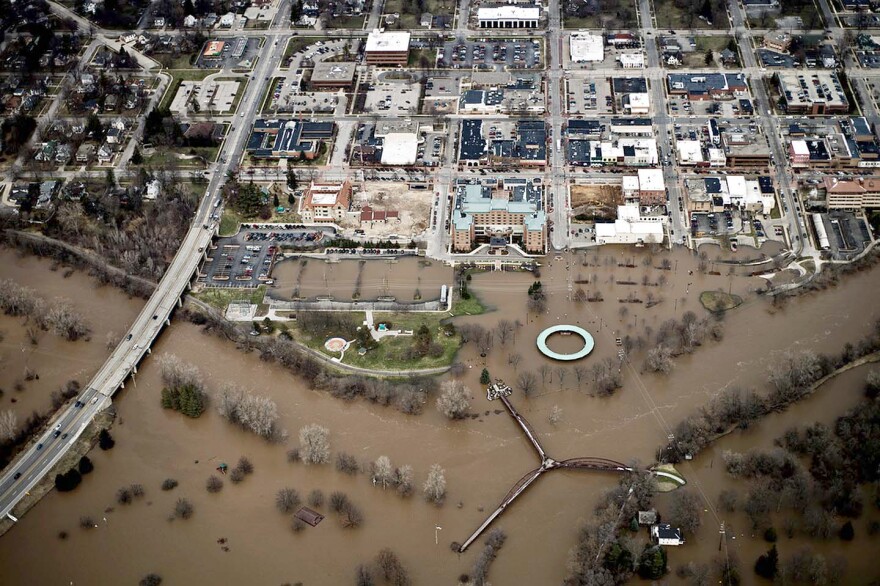The U.S. Army Corps of Engineers has received $1.2 million in new federal funding to continue its study of flood risk in the Tittabawassee River Watershed, which includes communities in Midland County.
The money, allocated in the corps’ 2025 Work Plan, supports the next phase of a multi-year investigation into flood mitigation options along the Tittabawassee, Chippewa and Pine rivers. That includes in-depth modeling, surveying and public engagement to explore potential solutions such as levees, floodgates, retention basins and road improvements.
Eric Ellis, the project’s senior manager and corps biologist, said the study is meant to help the community prepare for a future where floods are becoming more frequent.
“What used to be something that happened on a measurement of decades is now happening with much more frequency,” Ellis said.
He said the Corps hopes to find a mix of structural and non-structural strategies to protect people, property and infrastructure.
Flooding in the Midland area has caused significant damage in recent years, with five federal disaster declarations since 2013. While other state and federal efforts are addressing dam-related issues, the current corps study is focused specifically on mitigating flooding in Midland County and is separate from work related to the Sanford Dam.

The federal study is being conducted in partnership with Midland County, the city of Midland and the Midland Business Alliance. Local officials say they welcome the continued collaboration and hope the findings will lead to actionable change.
Tony Stamas, president and CEO of the Midland Business Alliance, said he’s grateful the federal support is moving forward.
“We are thankful that funding for this important study is continuing,” Stamas said. “The Corps of Engineers and the local sponsors are committed to this study and to finding flood reduction options for the Midland area.”
Midland City Manager Brad Kaye said the local partners are engaged in the process.
“The local partners look forward to working with the Detroit District every step of the way during this critical study of the Tittabawassee River Watershed,” Kaye said.
The next stage of work includes building a “future without project” model, a baseline scenario showing how the region might be affected by flooding if no action is taken. That model will help the corps compare the impact of different mitigation measures.
Ellis said the Corps is also evaluating economic, environmental and engineering factors to determine which alternatives are viable for long-term implementation.
Public engagement is a key part of the process. The Corps plans to hold a community presentation in September to share early modeling results and gather feedback. Final recommendations will be compiled into a chief’s report and presented to Congress for potential funding and implementation.
“We’re invested in this,” Ellis said. “This study is a priority for our district leadership. We just want the community to understand that we’re thinking about this all the time and we’re working on it every day here in our office… to make sure it’s something that is going to meet the community’s needs and protect the community from future flooding as best we can.”
To learn more about the study or view updates, visit the Tittabawassee River Midland flood risk management study website.





